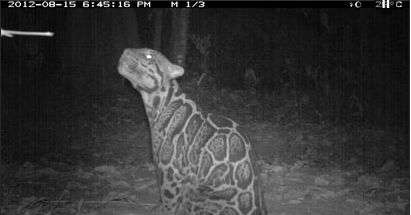'Camera Trap' wildlife images from Malaysian forest

Researchers from the School of Biosciences at the Danau Girang Field Centre (DGFC) in Sabah, Malaysia have completed 18 months of a camera trapping project in the Lower Kinabatangan Wildlife Sanctuary.
The programme forms part of the collaboration between the Sabah Wildlife Department (SWD) and Danau Girang Field Centre (DGFC) to further scientific research with the aim of contributing to long-term conservation projects in the area.
"This long-term programme initiated by the Department aims to provide information on presence/absence of wildlife in the corridor and document its use by different species," said Dr Laurentius Ambu, Director of the Sabah Wildlife Department.
A corridor of forest between two fragments of the Sanctuary has been monitored for more than 18 months using camera traps. Camera trapping involves the use of a motion sensor camera used by researchers to gather data on wildlife. The results have captured a rich biodiversity that exists within this segment of forest.

"After 18 months of intensive camera trapping, we have identified 27 species of mammals including the extremely rare otter civet and the charismatic Sunda clouded leopard and Malayan sun bear; and six species of birds including the endangered storm stork," summarised Dr Ambu.
These images support their preliminary findings that these animals rely on forest corridors for moving between forest patches. "Interestingly, we captured a lot of pictures of arboreal primates such as orangutans, proboscis monkeys and langurs (including the very rare Hose's langur) on the ground. It probably demonstrates that there is a lack of tree connection," explained Dr Benoit Goossens, Director of DGFC.
"Our results also show the high diversity of mammal species and the abundance of individuals using these narrow corridors of forest. Without these corridors, most populations would decline and go extinct. If we manage to maintain a link between forest fragments along the Kinabatangan, I believe that we can save the populations of Sunda clouded leopard, Malayan sun bear, Bornean elephant, orangutan, and other species in the area," said Dr Goossens.
During this programme, researchers are also monitoring the populations of Malayan sun bear and Sunda clouded leopard in the area. "Several individuals have been already identified, and we will soon start to track these cats and bears and attach satellite collars on them to learn about how they use this highly fragmented landscape. It will then increase the conservation prospects for the two species and lead towards an action plan for each of them," concluded Dr Goossens.
Provided by Cardiff University





















